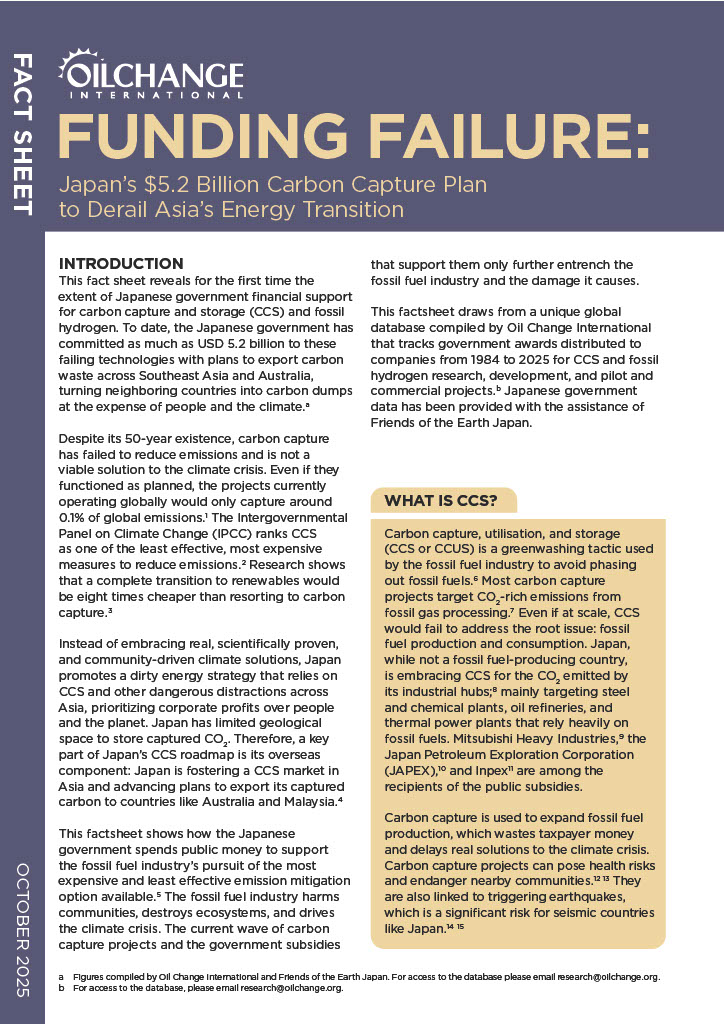Download the Funding Failure: Japan’s $5.2 Billion Carbon Capture Plan to Derail Asia’s Energy Transition fact sheet that illustrates Japan’s $5.2 billion spending of public funds on carbon capture technology since 2014. Japan is pushing this failed model across Southeast Asia while planning to turn the region into a dumping ground for its carbon waste.
The Japanese government has poured billions in subsidies for technology that has failed for 50 years and currently captures just 0.1% of global emissions worldwide. Japan is aggressively promoting CCS across the region through the Asia Zero Emission Community (AZEC), derailing the renewable energy transition of a region in which 99% of its solar and wind potential remains untapped.
Key findings:
$5.2 billion funneled to fossil fuel expanders (Mitsubishi Heavy Industries, JAPEX, Inpex) for a technology the IPCC ranks as least effective. Renewables would be 8x cheaper.
Japan aims to capture 120 to 240 million tons of CO2 annually by 2050, but its only operational demonstration project in Tomakomai captured just 100,000 tons annually between 2016 and 2019 after spending USD 364 million in public money. To meet its goals, Japan would need to replicate this expensive project up to 2,400 times, revealing the impracticality of its CCS roadmap.
Four of nine priority projects are designed to export captured CO2 to Malaysia and Australia. Ninety civil society groups call this “waste colonialism.”


AloJapan.com